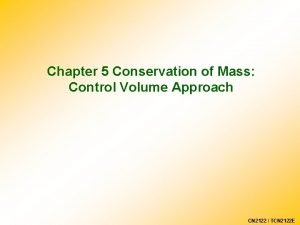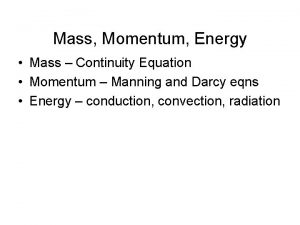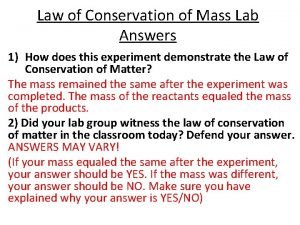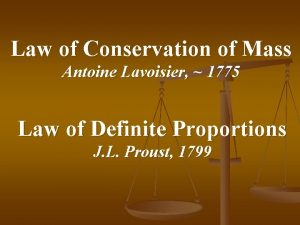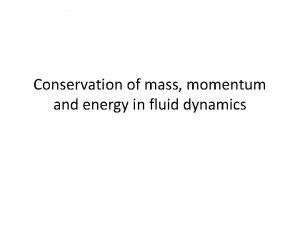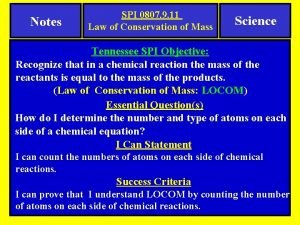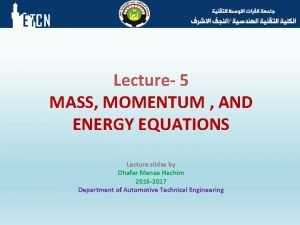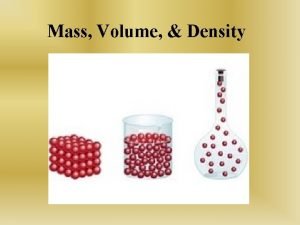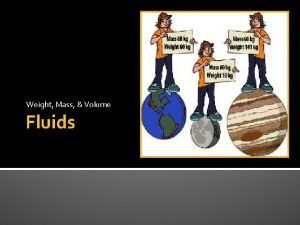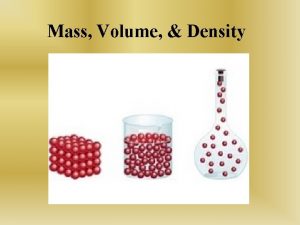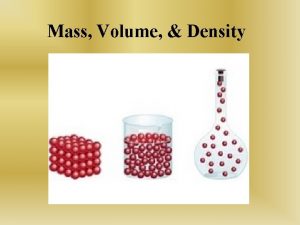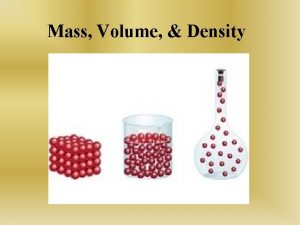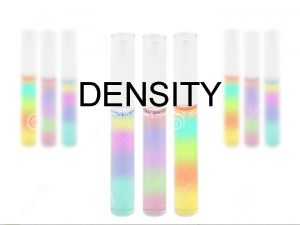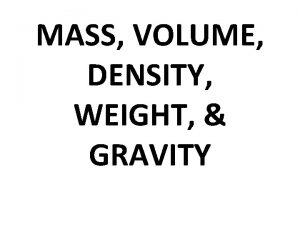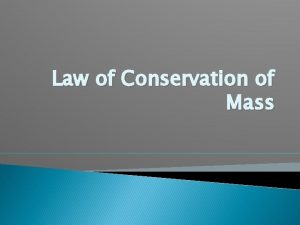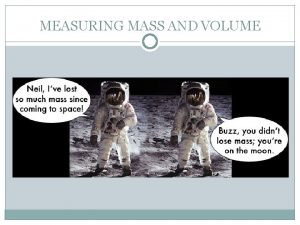Chapter 5 Conservation of Mass Control Volume Approach











- Slides: 11

Chapter 5 Conservation of Mass: Control Volume Approach CN 2122 / TCN 2122 E

Main Topics ü Introduction ü Derivation of Continuity Equation ü Applications CN 2122 / TCN 2122 E

5. 0 Introduction In this chapter and the two follow, the fundamental laws mentioned in the previous chapter will be derived without the characteristics of fluid, i. e. the detailed picture of what happens inside the control volume (the behaviour of fluid particle) is of no concern to our present scope. Fully understanding of Control volume and its control surface will be essential. CN 2122 / TCN 2122 E

5. 1 Derivation of Continuity Equation The law of conservation of mass states that mass may be neither created nor destroyed. With respect to a control volume, the law of conservation of mass may be simply stated as CN 2122 / TCN 2122 E

5. 1 Derivation of Continuity Equation Fig. 5. 1. 1 Rate of mass efflux = (ρv)(d. Acosθ) = ρ (d. A) |v| |n| cosθ Rate of mass efflux = CN 2122 / TCN 2122 E

5. 1 Derivation of Continuity Equation Rate of accumulation of mass = Integral expression of mass balance over a control volume becomes CN 2122 / TCN 2122 E

5. 1 Derivation of Continuity Equation If flow is steady relative to coordinates fixed to the CS, then For incompressible flow, the density is constant, then CN 2122 / TCN 2122 E

5. 1 Derivation of Continuity Equation Derivation of (eq. 5. 1. 1) from (eq. 4. 6. 5) N is M, η is unity (1), CN 2122 / TCN 2122 E

5. 2 Applications Example 5. 2. 1 Fig. 5. 2. 1 Example 5. 2. 2 Fig. 5. 2. 2 CN 2122 / TCN 2122 E

Points to remember ü The law of conservation of mass can be written mathematically in the following form, ü The first term on the right hand side of the above equation considers the net mass efflux across the control surface of the control volume whereas the second term considers the time rate of change of mass within the control volume. CN 2122 / TCN 2122 E

Tutorial Link to Tutorial 3 CN 2122 / TCN 2122 E
 Control volume approach
Control volume approach Fluid mechanics
Fluid mechanics Control volume vs control surface
Control volume vs control surface Concrete operational stage
Concrete operational stage Conservation of volume piaget
Conservation of volume piaget Continuity equation derivation
Continuity equation derivation Mass conservation equation
Mass conservation equation Conservation of mass lab answers
Conservation of mass lab answers Antoine lavoisier law
Antoine lavoisier law Fluid
Fluid Law of conservation od mass
Law of conservation od mass Conservation of mass momentum and energy equations
Conservation of mass momentum and energy equations
